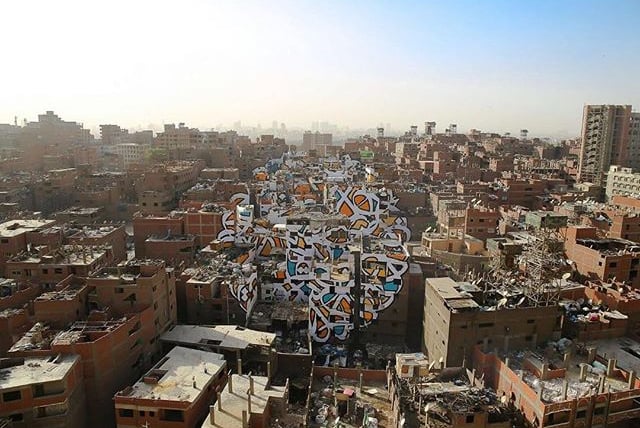
More that 50 buildings in one of Cairo’s poorest neighborhood have been transformed into a work of art by eL Seed. The French-Tunisian street artist spent several weeks creating a massive mural in Mansyiyat Naser, home of the city’s informal garbage collectors, who are predominantly Coptic Christians.
The piece, titled “Perception,” is a massive circle formed by Arabic calligraphy written in white, orange, and blue. The Islamic-looking design, which can be seen in its entirety only from the top of nearby Moqattam Mountain, features the words of Saint Athanasius of Alexandria, a third-century Coptic bishop: “Anyone who wants to see the sunlight clearly needs to wipe his eye first.”
eL Seed, Perception (2016).
Photo: courtesy eL Seed.
“Egypt’s highhanded government has shown little tolerance for artists,” the New York Times notes, adding that eL Seed would have likely been harassed or arrested by officials had he attempted to work in a less “forsaken corner of the city” than Manshiyat Naser’s trash-lined streets.
“The place is perceived as dirty, marginalized and segregated,” the artist writes on Facebook. “I am questioning the level of judgment and misconception society can unconsciously have upon a community based on their differences.”
eL Seed, Perception (2016).
Photo: courtesy eL Seed.
The neighborhood’s so-called Zabaleen, or garbage people, are reviled despite their important role in the urban ecosystem, where they recycle up to 80 percent of the city’s waste.
The artist told Glenn D. Lowry, director of New York’s Museum of Modern Art, at a talk at Art Dubai‘s Global Art Forum earlier this month. “In a project like this, the art was just a pretext for what we do, which is really a human experience.”